A Beginner’s Guide to Copyright for Website Owners
Once you have your website in place, you might be wondering about how to copyright it. You may even be asking questions such as What if someone copies my content and posts it as their own without giving me credit? Running a website means you may have to deal with copyright as both a producer and a consumer.
The good news is, as soon as you put something out into the world, you own it. However, if you’ve created a business with a large following and high value, there are those who may wish to copy your content. Registering the copyright for your website will give you added legal leverage should this occur.
In this article, we’ll explain how copyright law pertains to online content, then walk you through how to register a copyright for your website. Let’s get started!
How Copyright Law Pertains to Online Content
In a nutshell, copyright is the legal and exclusive right to copy (or permit to copy) a work of art. In other words, if you own the copyright to something, nobody can make a copy without your express permission.
One of the most common misunderstandings is that copyright is something you have to register for. In fact, as soon as you produce something and publish it, you own the copyright. This means any original content, from your blog posts to your About Me page belongs to you.
Put simply, if you produce content, you own it. This exclusive right originates with the creator, but can be sold, traded, or inherited.
On one hand, this means people cannot legally copy and paste your site’s content onto their own. They also cannot save and upload any site media without your permission. Of course, this works both ways. If you want to use the content of others, you are going to need their permission too – source attribution is not enough.
This has given rise to a number of sites containing solely free content to use. Much of this is available under a Creative Commons license that does not require the permission of its creator to be used. Other content can be acquired by purchasing a license, such as from Adobe Stock images, Shutterstock, iStock, and many more.
Why You May Want to Register a Copyright for Your Website
There are many reasons you may wish to register a copyright for your website. Ultimately, having additional legal protection can help you in the event any of your content is stolen.
If someone does the unthinkable and steals your content, a registered copyright means you could send them a cease and desist letter that tells them to remove your content immediately from their site. In many cases, this may be enough. However, if they continue to use your content without your permission, you can then take further legal action, including seeking compensation.
Although it’s not required to register a copyright for your site, it does give you added legal protection. As such, if someone uses your content without permission, you may have a higher likelihood of collecting compensation.
Of course, it’s important to note that A2 Hosting is not a legal expert (we just produce blazingly fast hosting!). As such, you may want to consult a lawyer before making any serious decisions about whether to register a copyright or not.
How to Register a Copyright for Your Website (In 3 Steps)
Some website owners register copyrights several times a year depending on how many new assets they produce. To do so based on US copyright law, follow the steps below.
Step 1: Go to the Official Copyright Registration Portal Website
To register a copyright for your website, begin by going to the official government Copyright website:
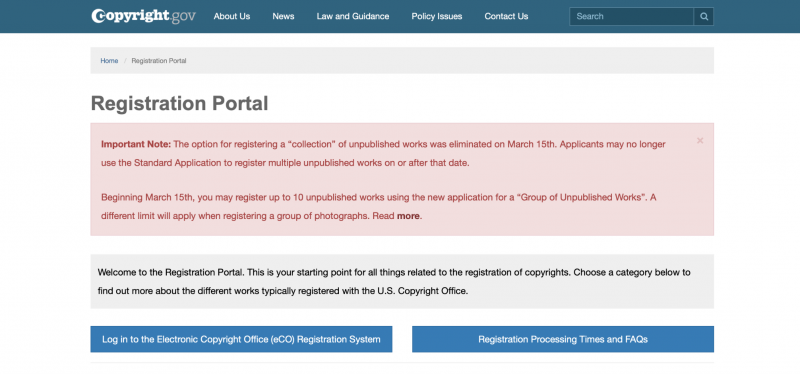
Here, you can submit all of the content you want to protect under United States copyright law. For those with multiple registrations to carry out, you can also do this in bulk with each submission.
You’ll notice there are different categories for various types of content. For websites and online content, you’ll be registering under Other Digital Content:

Fortunately, completing this step is straightforward. Simply click on the Log in to the Electronic Copyright Office (eCO) Registration System button, and head to the next step.
Step 2: Register Your Account

The next step is to either sign into your account (if you already have one), or register a new account.
For the latter, you’ll need to fill in your basic information, including your name, username, password, and a challenge question to recover your password. Thankfully, this is a similar process to the umpteen account forms you’ve filled in the past:
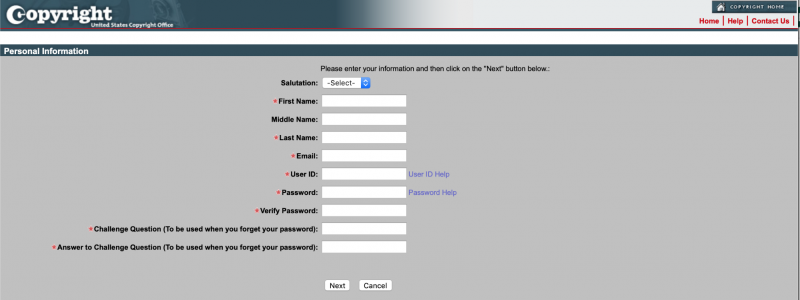
When you’re ready, click Next, and on the next screen, fill in your address, phone number and relevant contact information.
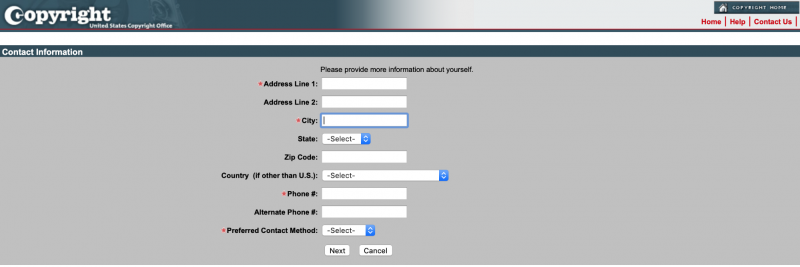
Click Next, then click Finish to complete your registration.
Step 3: Submit the Content You Want to Protect Under US Copyright Law
Once you’ve created and signed into your account, you can begin to submit the content you want to copyright:
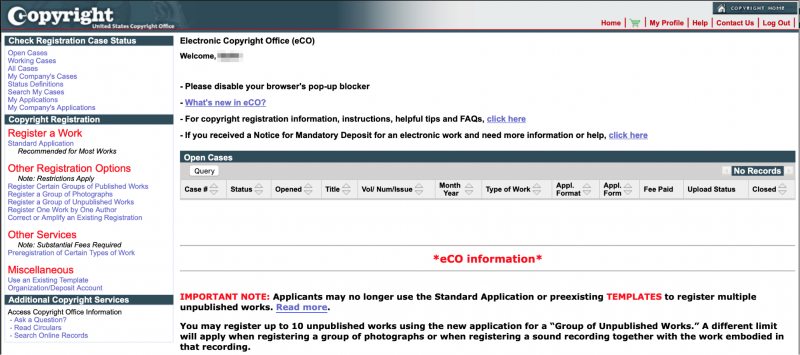
You may want to consider submitting your entire website in one batch, which will include all of its current articles, images, videos, and products. To begin, click on Standard Application under Register a Work:
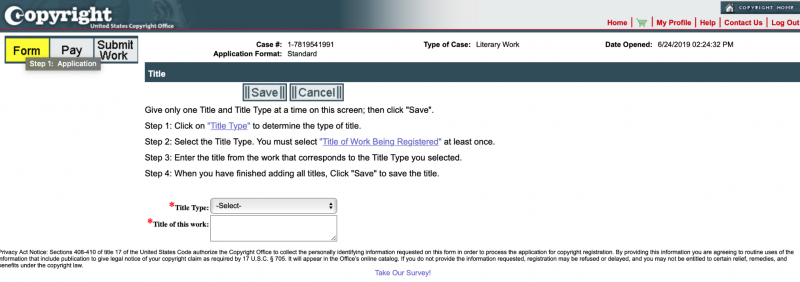
From there, fill out all the appropriate information about your work, including its title, publication date, authors, and any rights and permissions it may have. Each field is fairly simple to navigate, and is designed not to take too long. When you’re done, click Save.
You’ll then be directed to pay a fee, which is between $35 and $55 dollars. Once the transaction is complete, finalize your registration by clicking Submit Work.
As soon as your payment is approved and your content submitted (which can take some time), you now have a public record of your copyright. At this point, you’ve done all you can from a legal standpoint to ensure your site is protected from content thieves.
Conclusion
No one wants their content and ideas to be used without permission. It’s not simply a matter of pride – it could also cause a hit to your income if a particularly valuable idea has been swiped. As such, it’s important to consider protecting everything you’ve worked so hard to produce.
To help protect your website, you can register a copyright by following these three steps:
- Go to the copyright registration portal.
- Register your account.
- Submit the content you want to protect under copyright law.
Featured image: Riedelmeier.
